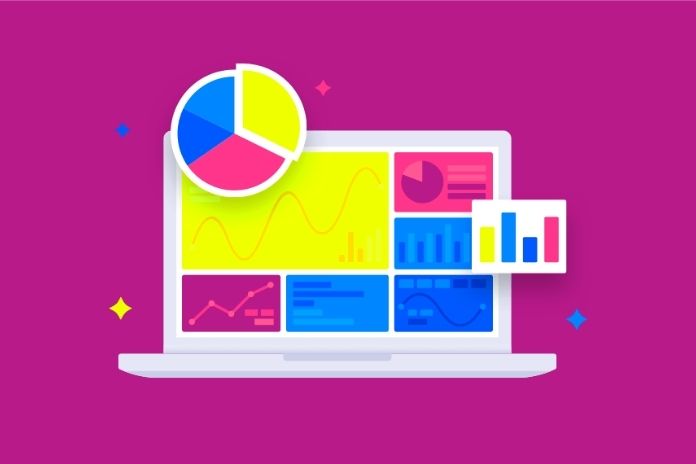Seven Digital Marketing Metrics: The Best Way To Measure Them

Digital marketing metrics are information that we can measure and track. It is these indicators that show the performance of marketing campaigns.
Through metrics, we know the effectiveness of a specific plan of action. They also let us know what to optimize and what to discard.
No, digital marketing metrics are not just numbers. Before that, they help guide the following strategies adopted.
The seven metrics that we will cover in this content are the following:
- ROI (Return on Investment);
- CTR (Click-through rate);
- CPC (Cost per click);
- Conversion rate;
- Unique Visits;
- Non-site visits;
- Time on Site.
Metrics In Digital Marketing: After All, Why Measure?
If used strategically, digital marketing metrics are a real treasure. After all, they act as a guide and show you where you are going wrong, which direction to go and what to do to improve and recover opportunities.
It is much easier to measure numbers and draw a concrete analysis than to risk-taking shots in the dark. Your performance will thank you.
Oh! And before you’re wondering what likes and shares say about your content, we warn you: beware! They are known in the marketing world as vanity metrics.
Understand that likes, followers, shares and views on stories, and fan pages say little about your performance on the networks.
What Digital Marketing Metrics Should You Keep An Eye On?
Have you ever heard the saying that we only prepare for the future by studying the past? Well, this is precisely the logic of analyzing digital marketing metrics. But which one to measure? We solved this doubt through the overview we made below.
1 – Return On Investment (ROI)
ROI is one of the most critical metrics in any business. Since it deals directly with the profit of a campaign, we can even say that it should be the number 1 metric on the list. By knowing the ROI of stock, you know how much of a profitable return it has brought to your business. And consequently, you will see if it is worth investing in similar campaigns in the future.
What’s more, you can still predict your ability to scale with the return on investment. If the company can produce more and achieve even greater ROI, why not? We can obtain ROI by dividing the revenue obtained by the amount invested:
ROI = revenue earned / amount invested
2 – Click-Through-Rate Or CTR
Want to know if an ad is performing well? Then measure the click-through rate – or CTR. More than just an audience, it’s essential to know how many people clicked on your ad and were directed to your landing page.
Through CTR analysis, you can measure targeting levels and the quality of keywords, images, and text. In addition, CTR is given as a percentage and can be obtained by the calculation below:
CTR = (number of ad clicks / number of impressions) x 100
3 – Cost Per Click (CPC)
It is essential to know the cost per click – or CPC in paid campaigns. That’s because it is by CPC that you determine how much is being invested for a person to reach a page on your website.
In addition, the metric is also essential for evaluating which ads are performing the best. And so, which ones should get more investment. The cost per click can be calculated by dividing the price of the campaign by the number of ads obtained, according to the formula below:
CPC = campaign cost / number of clicks obtained
4 – Conversion Rate
All that separates your site user from becoming a potential customer is conversion. Remember that, by conversion, we can mean subscribing to a newsletter, selling a product, or completing a registration.
In other words: the conversion rate is versatile and can be used for many purposes. Also, a low number of conversions signals site navigability issues and potential CTA issues.
In the case of the conversion rate, the calculation will depend on the strategic objective stipulated. However, the result is usually obtained by dividing the number of visits by the number of visitors who purchased, subscribed or registered on the site.
5 – Non-Site Visits
If you want to know how much reach your business has on the internet, measure your website visits. The metric is simple, and you can get it with a simple visit to Google Analytics. Do you know what the main Google Analytics certifications that will make your job easier are?
You have an idea of how many people access your content with it if you want to know which pages are most accessed, filter by the number of individual visits.
6 – Unique Visits
No, unique visits are not the same as site visits. Here, you have access to the number of visitors who returned to your site. Generally speaking, the higher the return, the better.
7 – Time On Site
This metric will measure the time spent on content on your site. If your blog post takes approximately 6 minutes to read, but people only stay 4 minutes, something must be wrong. Objectively: here, we have access to the average time (in minutes) that each user spends browsing your site.
Digital Marketing Metrics: An Indicator For Each Objective
Let it be clear: there are numerous digital marketing metrics. And none of them is useless. On the contrary: what will dictate the importance of each one is its marketing strategy and the objectives outlined by it.
Therefore, study your digital planning well and carefully define which metrics should be analyzed, which are vital indicators for you and can only serve as a support.
Also Read: Is Marketing Worth Investing In Digital Influencers?


